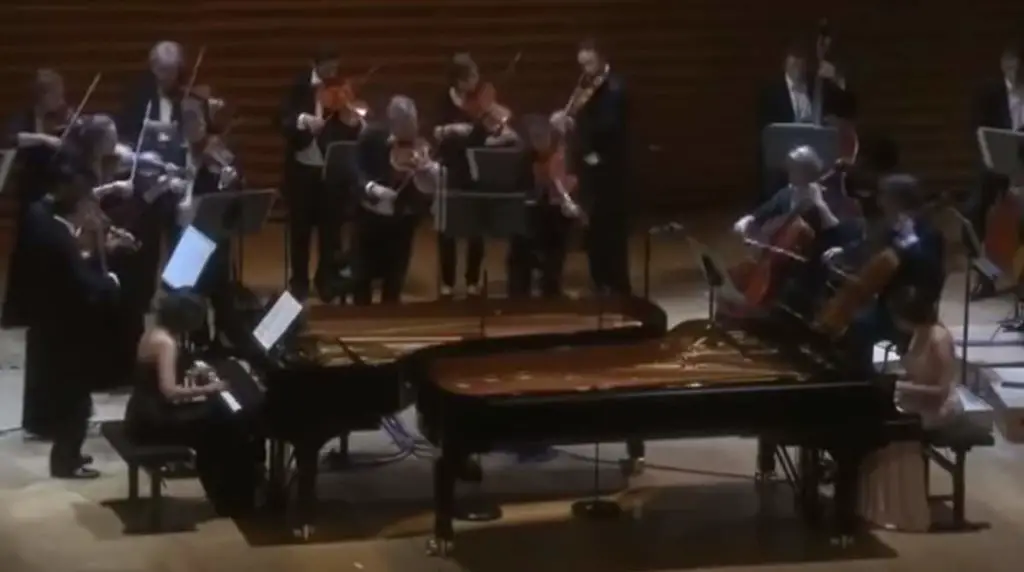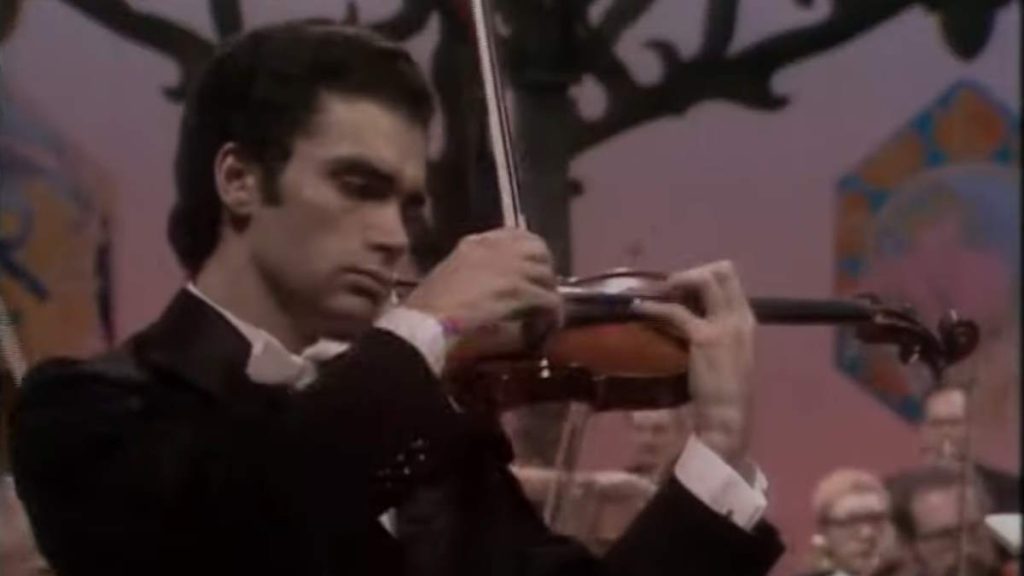The laureates of the 2024 International Classical Music Awards [ICMA] perform the most beautiful pieces in their repertoire, supported by the Orquesta de València, conducted by Alexander Liebreich. The gala concert took place on 12 April 2024 in the Palau de la Música in València, Spain.
International Classical Music Awards (ICMA)
The International Classical Music Awards (ICMA) are prestigious accolades in the field of classical music, recognizing excellence in musicianship, performance, and recording. Established in 2011 after the discontinuation of the Cannes Classical Awards, the ICMA brings together a jury of prominent music critics from major European music magazines, radio stations, and online services. The awards celebrate a wide range of categories including orchestral, chamber music, solo instrument, vocal, and contemporary music, as well as lifetime achievement awards to honor outstanding contributions to classical music.
Performers
- Orquesta De València
- Alexander Liebreich | Conductor
- Sylvain Cambreling | Conductor (Icma Special Achievement Award)
- Orazio Sciortino | Conductor & Composer (Icma Composer Award)
- Renaud Capuçon | Violin (Icma Artist Of The Year)
- Lana Zorjan | Violin (Icma Discovery Award)
- Tanja Tetzlaff | Cello (Icma Audio Award: Chamber Music)
- Güher And Süher Pekinel | Piano (Lifetime Achievement Award)
- Cassie Martin | Guitar (Icma Classeek Award)
- Sharon Bezaly | Piccolo (Icma Audio Award: Contemporary Music)
- Aida Pascu | Soprano (Icma Young Artist Of The Year)
- Cyrille Dubois | Tenor (Icma Audio Award: Baroque Vocal)
International Classical Music Awards [ICMA] 2024 Gala Concert Program
With start times in the video:
- (00:00) Coming On Stage
- (00:34) Maurice Ravel: Daphnis Et Chloé, Suite No. 2, Lever Du Jour, Orquesta De València, Alexander Liebreich (Conductor)
- (07:44) Mario Castelnuovo-Tedesco: Guitar Concerto No. 1 in D Major, Op. 99, the 1st movement (Allegretto), Cassie Martin (Guitar), Orquesta De València
- (15:20) Olivier Messiaen: L’ascension, III. Alléluia Sur La Trompette, Alléluia Sur La Cymbale, Sylvain Cambreling (Conductor), Orquesta De València
- (22:42) Giuseppe Verdi: Ernani, Ernani Involami. From The Opera “Ernani”, Aida Pascu (Soprano), Orquesta De València
- (30:52) Charlotte Sohy: Thème Varié, Op. 15, Renaud Capuçon (Violin), Orquesta De València
- (41:28) Orazio Sciortino: Grande Bagatella For Orchestra (2023/24), Orquesta De València, Orazio Sciortino (Conductor)
- (51:08) Johann Sebastian Bach: Concerto For Two Pianos In C Minor, BWV 1062, the 1st Movement, Güher And Süher Pekinel (Piano), Orquesta De València
- (55:31) Witold Lutosławski: Fragments Of Paganini Variations, Güher And Süher Pekinel (Piano)
- (1:00:17) Jean-Féry Rebel: Impétueux Torrent, From The Opera “Tarsis Et Zélie”, Cyrille Dubois (Tenor), Orquesta De València
- (1:05:26) Maurice Ravel: Tzigane, Lana Zorjan (Violin), Orquesta De València
- (1:17:15) Kaija Saariaho: Dolce Tormento, Sharon Bezaly (Piccolo)
- (1:24:04) Antonin Dvořák: Rondo For Cello And Orchestra Op. 94, Tanja Tetzlaff (Cello), Orquesta De València
1. Maurice Ravel’s Daphnis Et Chloé
Maurice Ravel’s “Daphnis et Chloé” is a ballet in one act, described as a “symphonie chorégraphique” (choreographic symphony). Composed between 1909 and 1912 for Sergei Diaghilev’s Ballets Russes, the piece tells a love story between the goatherd Daphnis and the shepherdess Chloé in ancient Greece. It features lush orchestration and intricate choral parts, making it Ravel’s longest and most complex work. The music is celebrated for its expressiveness and vivid depiction of the idyllic and dramatic scenes within the narrative.
2. Mario Castelnuovo-Tedesco’s Guitar Concerto No. 1
Mario Castelnuovo-Tedesco’s Guitar Concerto No. 1 in D major, Op. 99, composed in 1939, stands as one of the most significant contributions to the guitar concerto repertoire. Commissioned by the virtuoso guitarist Andrés Segovia, it helped elevate the classical guitar to a solo concert instrument. The concerto is lyrical and richly harmonic, melding Italian melodic style with Spanish folk influences. It consists of three movements: Allegretto, Andantino alla romanza, and Ritmico e cavalleresco, showcasing both the lyrical and technical capabilities of the guitar.
3. Olivier Messiaen’s L’ascension
Olivier Messiaen’s “L’Ascension” is a profound orchestral work, originally composed as an organ suite in 1933 and reimagined for full orchestra in 1935. The piece consists of four meditative movements, each serving as a musical depiction of Christ’s ascension into heaven. Messiaen, known for his deeply spiritual and religious themes, imbues the work with a transcendent quality, using innovative orchestration to evoke a sense of mysticism and divine joy. “L’Ascension” is celebrated for its vivid color and the composer’s characteristic use of complex rhythms and harmonies.
4. Giuseppe Verdi’s Ernani, Ernani Involami
“Ernani, involami” is a poignant aria from Giuseppe Verdi’s opera “Ernani,” first performed in 1844. This aria occurs in the first act, sung by the heroine Elvira, who is deeply in love with the titular bandit Ernani but is forced to marry her elderly guardian. In this powerful piece, Elvira passionately pleads for Ernani to whisk her away from her unwanted fate. The aria showcases Verdi’s ability to convey deep emotional turmoil and desire through soaring vocal lines and dramatic intensity, making it a favorite among sopranos for its emotive depth and vocal challenge.
5. Charlotte Sohy’s Thème Varié, Op. 15
Charlotte Sohy’s “Thème Varié, Op. 15” is an exquisite example of her compositional style, blending intricate melodies with rich harmonic textures. Written in the early 20th century, this piece for piano showcases Sohy’s flair for thematic development and variation. The work begins with a simple, elegant theme, which is then elaborated upon through a series of variations, each adding layers of complexity and emotional depth. The variations explore a range of dynamics and tempos, highlighting Sohy’s skill in creating a cohesive yet diverse musical narrative.
6. Orazio Sciortino’s Grande Bagatella For Orchestra
Grande Bagatella For Orchestra is a 2023 composition by the Italian composer and conductor Orazio Sciortino.
7. Johann Sebastian Bach’s Concerto For Two Keyboards In C Minor, BWV 1062
Johann Sebastian Bach’s Concerto for Two Pianos in C Minor, BWV 1062, is a masterful adaptation of his earlier concerto for two violins. Composed around 1736, this work exemplifies Bach’s skill in counterpoint and his ability to rework material for different instruments. The concerto is structured in three movements: a vigorous Allegro, a deeply expressive Adagio, and a lively Allegro. The interaction between the two pianos creates a dynamic interplay, making it a showcase of intricate dialogues and harmonious blends, which highlights Bach’s genius in the baroque concerto form.
8. Witold Lutosławski’s Variations on a Theme of Paganini, for two pianos
Witold Lutosławski’s “Variations on a Theme of Paganini” for two pianos, composed in 1941, is a brilliant reimagining of Niccolò Paganini’s Caprice No. 24. Lutosławski’s version showcases his innovative approach and technical prowess, transforming the well-known violin theme into a complex and engaging work for two pianos. The piece is structured around a series of variations that explore different rhythmic, harmonic, and textural possibilities, offering both pianists an opportunity to engage in a virtuosic and dynamic musical dialogue. This work not only pays homage to Paganini but also highlights Lutosławski’s distinctive compositional voice.
9. Tarsis et Zélie
Tarsis et Zélie is an opera by the French composers François Francoeur and François Rebel, first performed at the Académie Royale de Musique (the Paris Opera) on 19 October 1728. It takes the form of a tragédie en musique in a prologue and five acts. The libretto is by Jean-Louis-Igance de La Serre.
10. Maurice Ravel’s Tzigane
Maurice Ravel’s “Tzigane” is a rhapsodic composition that vividly captures the fiery spirit of Romani music. Composed in 1924 for violin and luthéal (a type of piano with harp-like tonal effects, though it is often performed with a standard piano or orchestra), the piece was inspired by the playing of Hungarian violinist Jelly d’Arányi. “Tzigane” starts with a slow, intricate solo violin introduction, leading into a passionate, virtuosic display that showcases the violinist’s technical prowess and expressive capabilities, echoing the improvisational style of Romani musicians.
11. Kaija Saariaho’s Dolce Tormento
Kaija Saariaho’s “Dolce Tormento” is a contemporary composition for solo piccolo, composed in 2004. The piece draws its title from Petrarch’s poem, reflecting the “sweet torment” of unrequited love. Saariaho explores the expressive capabilities of the piccolo, typically known for its bright, high pitches, using extended techniques to elicit a broad palette of sounds and emotions. The work is characterized by its lyrical and at times, intense passages that challenge the performer’s technical skills while expressing the deep, nuanced emotions conveyed in the text.
12. Antonin Dvořák’s Rondo For Cello And Orchestra Op. 94
Antonín Dvořák’s “Rondo for Cello and Orchestra in G minor, Op. 94” is a lively and charming piece that showcases the cello’s lyrical and playful qualities. Composed in 1891, this work highlights Dvořák’s skill in crafting engaging melodies and his affinity for Bohemian folk music. The Rondo’s structure allows the solo cello to demonstrate both virtuosic flair and expressive depth, supported by warm orchestral textures. This composition, with its spirited theme and rhythmic vitality, is a delightful example of Dvořák’s ability to blend technical prowess with emotional expressiveness in his orchestral works.
Sources
- International Classical Music Awards on Wikipedia
- International Classical Music Awards’ official website
- Daphnis et Chloé on Wikipedia
- Witold Lutosławski’s Variations on a Theme of Paganini, for two pianos on the L.A. Phil website
- Tarsis et Zélie on Wikipedia
- Mendelssohn: Symphony No. 3 [Paavo Järvi, Tonhalle-Orchester Zürich] - May 16, 2024
- Brahms: Symphony No. 1 [Haifa Symphony, Bar Avni] - May 16, 2024
- Bach: Goldberg Variations [András Schiff] - May 15, 2024



